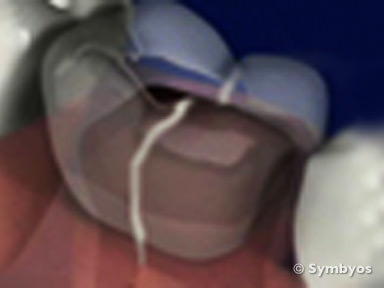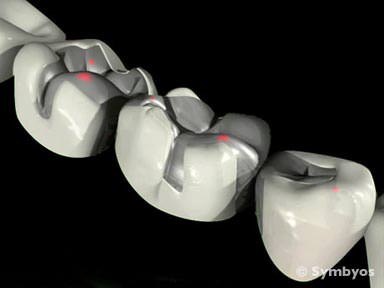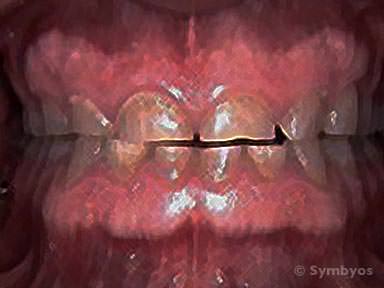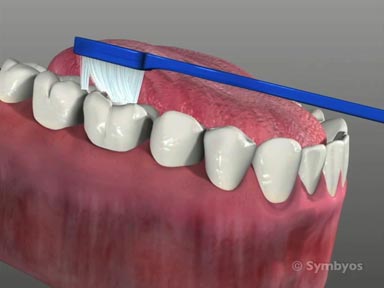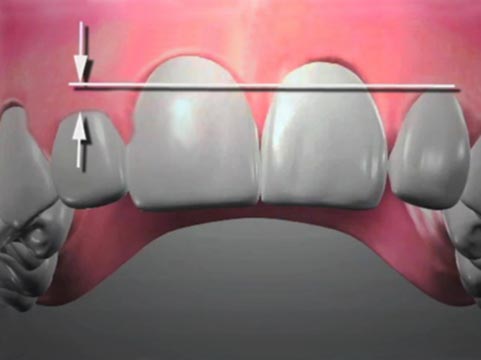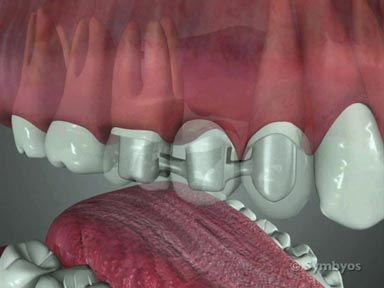Bite Problems and Tooth Grinding
It hurts when I bite or chew. What might be causing this?
Many times pain on biting results from a tooth which is cracked. Cracked teeth may be hard to diagnose, because they may not always hurt when the patient bites. Bite sensitivity may also be a result of a bruised ligament. Teeth are held into the jaw by a suspensory ligament called the periodontal ligament. They are generally not rigidly fused to bone. The periodontal ligament contains an extensive web of blood vessels and nerve tissue, which can become bruised by biting down forcefully on hard or sticky foods, or by sustaining a forceful blow to the tooth. This is known as a concussion injury.
Often a tooth with a concussion injury won’t hurt when you push on it with your finger, but will if you tap on it. cracked teeth often hurt when you push on them—especially if you place dividing pressure between two cusps of the tooth.
If the tooth is a primary tooth, it is important to monitor the gums for signs of a blister, which may develop following a traumatic blow to the tooth. If this occurs, the tooth may need to be removed. You should always consult a dentist when there has been trauma to a tooth.
Sometimes the tooth will darken from excess blood that flows into the it as part of the inflammatory reaction of the body to trauma. Oxygenated blood is rich in iron, which has a reddish tint, and when trauma occurs, excess blood flow can saturate the dentin of the tooth with this red pigment. The result is a tooth that appears darker. However, this does not mean the tooth will die or abscess. Your dentist will want to monitor the vitality (is it alive?) and viability (is it going to stay alive?) of the tooth following trauma.
What are the causes of an abnormal bite?
Understanding issues with the bite centers on two facts. First, teeth are not rigidly fused to the jaw bones under normal circumstances. They float within an elastic cushioning ligament called the periodontal ligament, that allows the teeth some freedom to move. Second, the jaw joints are not rigidly pinned like a door hinge. They allow the lower jaw to rotate and move back and forth, suspended from a series of muscles that work together to position it as needed for the required task (chewing, speaking, etc.). Ideally, all of the teeth touch evenly when the patient swallows, and then part slightly when the jaw muscles are in a position of rest.
Teeth which have been injured may physically have moved from their normal position, or may elevate in the bite due to the presence of inflammation around their root(s). Sometimes new dental restorations (such as fillings) seem to be properly adjusted when the patient leaves the dental office, but within a day or two, the tooth may begin to feel unusual. This may be due to the onset of inflammation around the roots following the procedure.
The patient’s inability to feel their bite while their teeth are numbed for a dental procedure can result in the new restoration being slightly out of adjustment (post-operative hyperocclusions).
An abnormal bite can be produced by inflammation in the jaw joints (TMJs), which may not allow the jaws to close properly. In the same way, jaw injuries and jaw muscle tenderness (myalgia), which can result from long-term tooth grinding can cause patients to alter the way they close their teeth together.
An irregular bite can also be caused by broken or dislodged dental restorations like fillings and crowns. Expansion of jaw cysts or jaw tumors can cause teeth to move, and if it happens quickly enough, the patient may perceive the change in their bite. Any time your bite doesn’t feel right, you should talk to a dentist as soon as possible to determine how best to proceed. If pain or swelling are present, you should be seen as soon as possible to rule out potentially serious problems like infections.
Can grinding my teeth lead to problems?
A tooth grinding habit may be part of a larger problem, like emotional or psychological stress; and it may lead to significant problems with the teeth, jaw muscles and jaw joints.
Should I be concerned that my teeth don’t line up?
Misaligned teeth are generally a result of a condition known as malocclusions. Temporary malocclusion can be produced by inflammation in the jaw joints, jaw muscle pain (myalgia), or trauma to the jaws or face.
What causes notches in the side of a tooth?
Notches in teeth that are found at the gum line may be due to heavy bite stresses on properly aligned teeth, or normal bite forces on poorly aligned teeth. They are known as abfractions and abrasions. They may be aggravated by heavy toothbrushing.
More on ToothIQ.com
What is MOST IMPORTANT to you when choosing a dentist? Thank you!
